Charger CoilMaster Smartcharger A4



This is a simple charger that is specialized for 65mm long batteries, i.e. unprotected 18650 and 26650 LiIon cells.




The charger comes in a cardboard box with specifications on the back.

The pack contained the charger, a power supply and a instruction sheet.

The charger has a 5V input that is used with the supplied power supply.

The power supply can supply a lot of current.

The user interface is 4 red leds for each battery, they will be animated when charging and all four will be on when battery is full. The leds are not very bright, i.e. they are difficult to seen in sunshine or bright light.

The charger has two different charge current depending on slot used and this is marked in the slots.


The charger has a fixed length slot and it fits unprotected 18650 and some 26650 cells (only center slots). The problem with 26650 is the button top that some cells have, there are not space for that.





Measurements on charger
-
LiIon batteries will be discharged with 24mA/150mA in 1A/2A slots when power is off.
-
Below 0.9 volt the charger will charge with about 10mA
-
Below 2.9 volt the charger will charge with about 100mA
-
Above 2.8 volt the charger will use normal charge current
-
Power consumption when idle is 0.21 watt from mains.
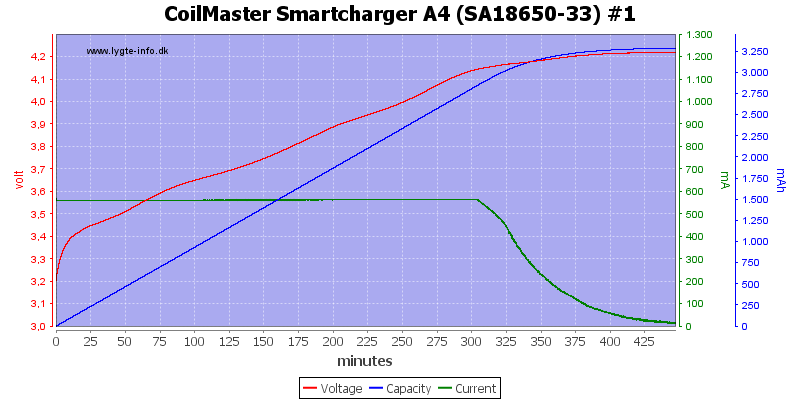
The charge curve is a nice CC/CV, but it never terminates, this is not the best charger behaviour. The current is supposed to be 1A, but it only 0.56A
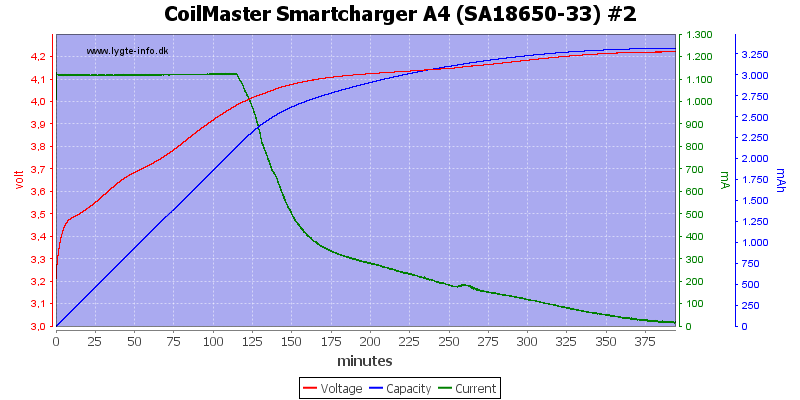
This is a 2A slot and the current is 1.1A
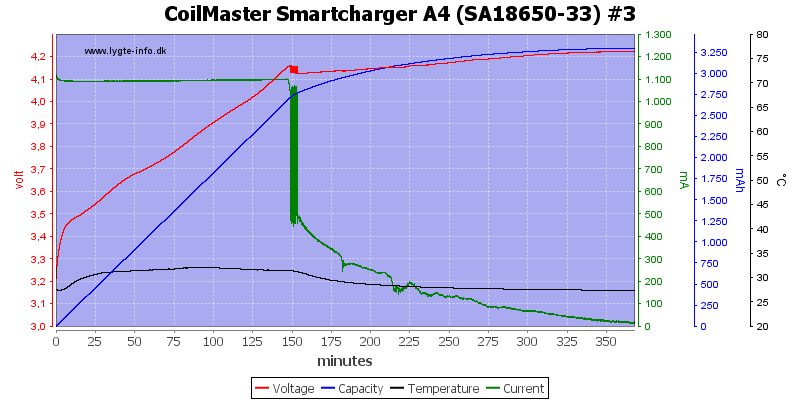
There is a some oscillation when the charger goes from constant current to constant voltage on this channel.
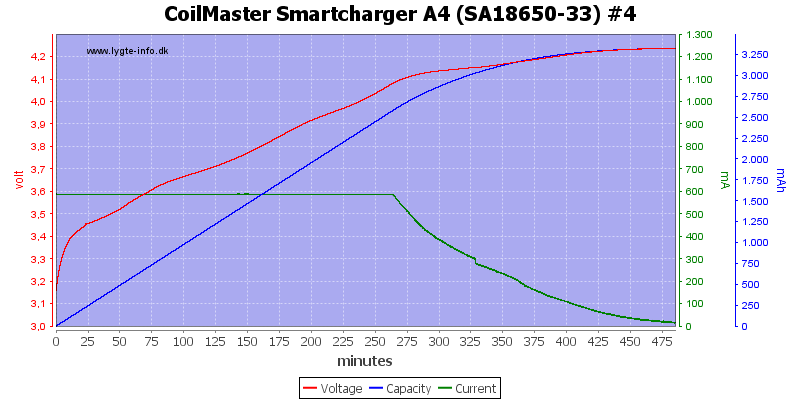
Channel \#4 is about 0.6A
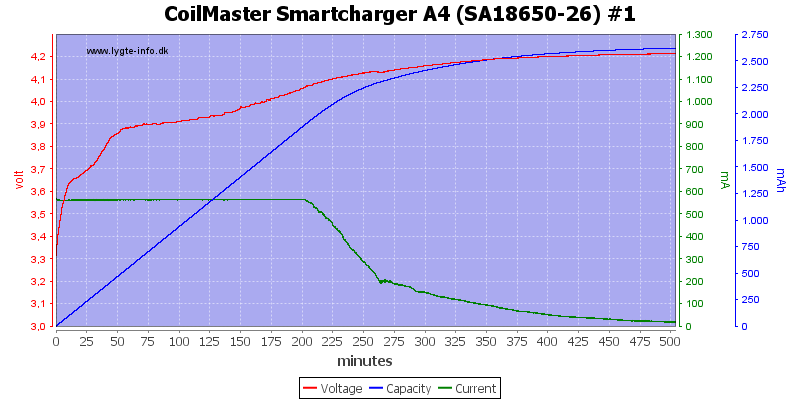
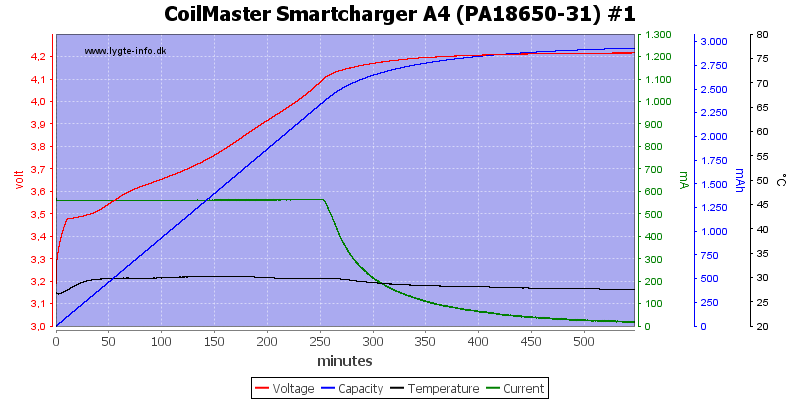
These two cells get charged fine, but it is the users responsibility to remove the batteries when they are full. Within a couple of hours in fine. Leaving them longer will mean increased wear on the cells.
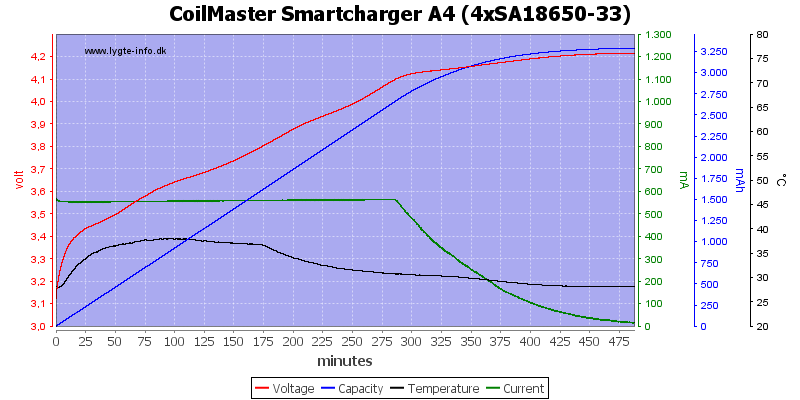
Charge speed is the same with four cells.
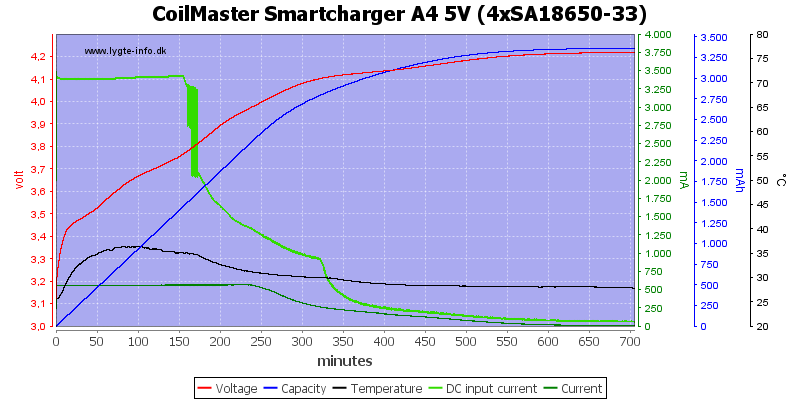
The charger needs about 3.5A at 12V when charging 4 cells, again the oscillations can be seen.
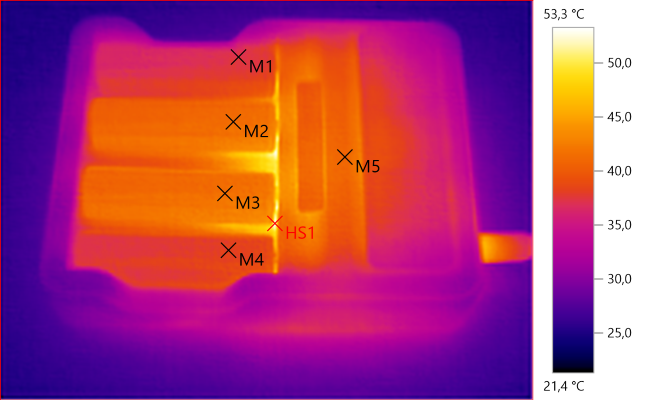
M1: 37,3°C, M2: 41,4°C, M3: 41,6°C, M4: 38,3°C, M5: 40,9°C, HS1: 53,3°C
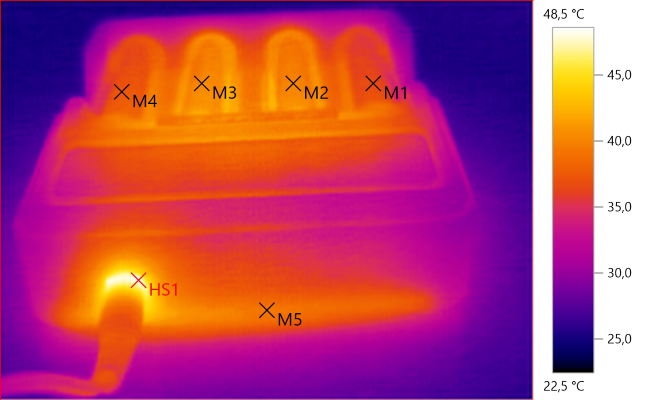
M1: 36,5°C, M2: 40,1°C, M3: 40,4°C, M4: 37,5°C, M5: 39,4°C, HS1: 48,5°C
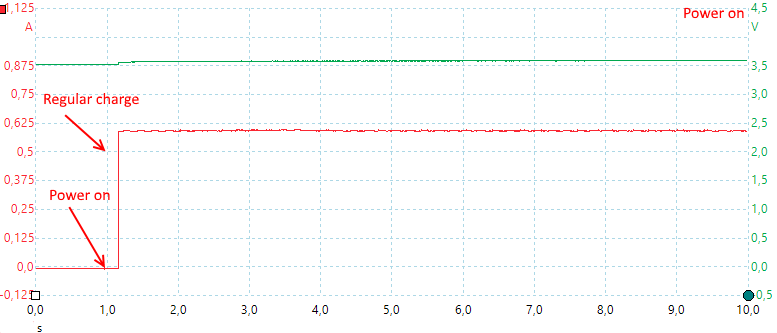
This charger is rather simple and will start in less than a second.
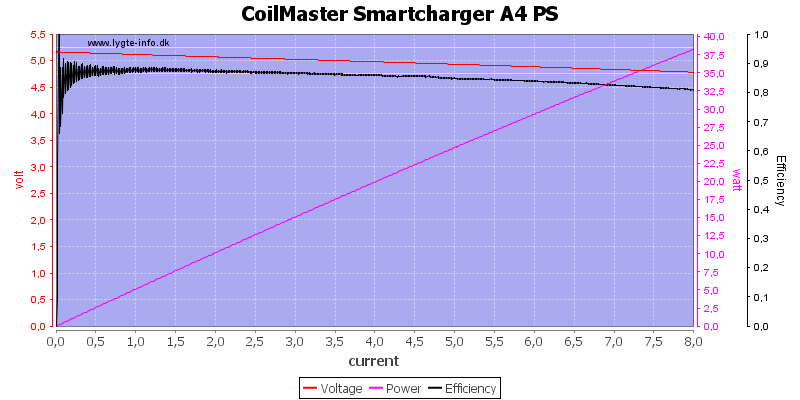
Usual I do not bother checking the supplied power supply, I just assumes it can deliver the power. In this case the charger is using considerable less current than expected and I wondered if the power supply was below rating.
It is not, the output voltage drops a bit with load, but not much and the efficiency is very good.
Testing the charger with 2830 volt and 4242 volt between mains and low volt side, did not show any safety problems.
Conclusion
The idea of a simple xx650 charger may be good enough, but for this one I have a couple of complaints:
-
The current is much lower than rated.
-
The charger never stops, this is called float charging and is not a good idea for LiIon. To avoid any damage from the float charging, batteries must be removed within a few hours after they are charged, never leave them on the charger for days.
-
The charger will discharge batteries when not powered.
-
The length requirement is rather strict, not all unprotected cells will fit.
I will rate the charger acceptable.
Notes
The charger was supplied by CoilMaster for review (I have checked two chargers, both used about the same charge current).
Here is an explanation on how I did the above charge curves: How do I test a charger